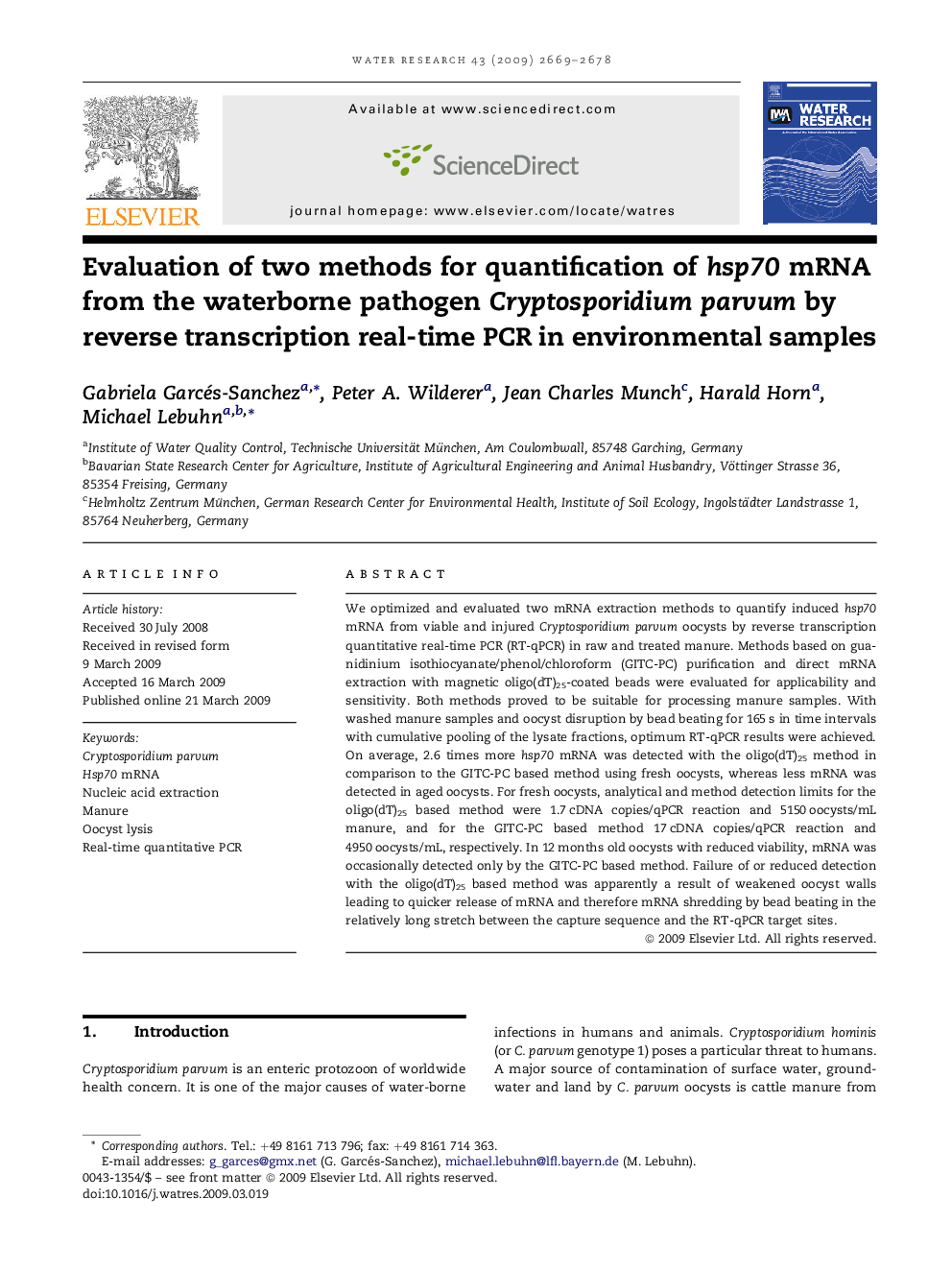| کد مقاله | کد نشریه | سال انتشار | مقاله انگلیسی | نسخه تمام متن |
|---|---|---|---|---|
| 4483141 | 1316879 | 2009 | 10 صفحه PDF | دانلود رایگان |

We optimized and evaluated two mRNA extraction methods to quantify induced hsp70 mRNA from viable and injured Cryptosporidium parvum oocysts by reverse transcription quantitative real-time PCR (RT-qPCR) in raw and treated manure. Methods based on guanidinium isothiocyanate/phenol/chloroform (GITC-PC) purification and direct mRNA extraction with magnetic oligo(dT)25-coated beads were evaluated for applicability and sensitivity. Both methods proved to be suitable for processing manure samples. With washed manure samples and oocyst disruption by bead beating for 165 s in time intervals with cumulative pooling of the lysate fractions, optimum RT-qPCR results were achieved. On average, 2.6 times more hsp70 mRNA was detected with the oligo(dT)25 method in comparison to the GITC-PC based method using fresh oocysts, whereas less mRNA was detected in aged oocysts. For fresh oocysts, analytical and method detection limits for the oligo(dT)25 based method were 1.7 cDNA copies/qPCR reaction and 5150 oocysts/mL manure, and for the GITC-PC based method 17 cDNA copies/qPCR reaction and 4950 oocysts/mL, respectively. In 12 months old oocysts with reduced viability, mRNA was occasionally detected only by the GITC-PC based method. Failure of or reduced detection with the oligo(dT)25 based method was apparently a result of weakened oocyst walls leading to quicker release of mRNA and therefore mRNA shredding by bead beating in the relatively long stretch between the capture sequence and the RT-qPCR target sites.
Journal: Water Research - Volume 43, Issue 10, June 2009, Pages 2669–2678